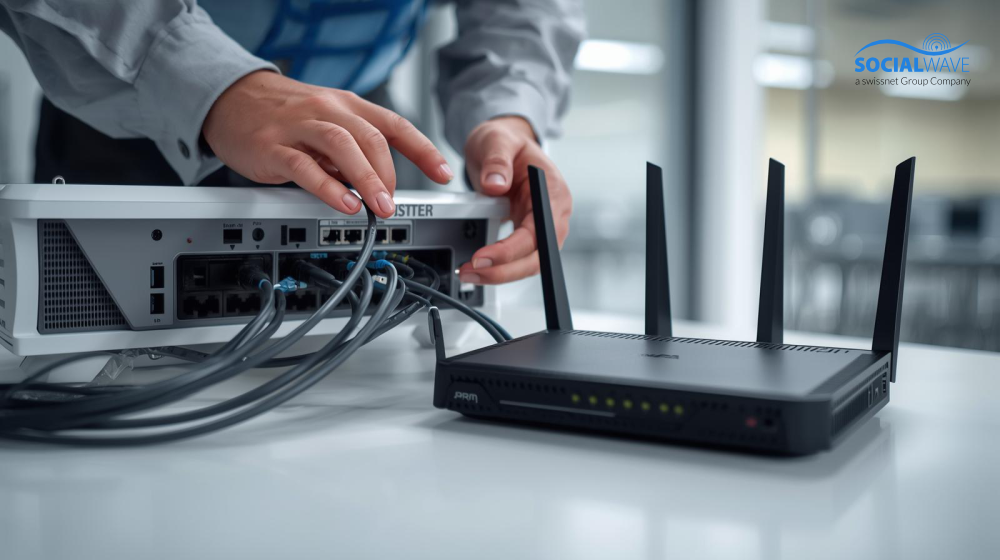How gastronomy has changed after the crisis

In Germany, the corona crisis appears to be almost over. Everyday life is returning to normal. The shops are open and you can meet people from several households again. But the crisis has also left its mark. Many businesses are still far from the economic level they were at before the crisis. Of course, the catering sector is also particularly affected. This industry had to adapt in a very short period of time to the huge changes that came with the crisis. Many restaurants have overcome this challenge and now have a more robust operation than before the crisis. This article will now show you exactly what these changes look like.
contents Conceal
1 The introduction of a pick-up and delivery service
3 Communication between restaurant operators and guests
4 The lunch business is declining
The introduction of a pick-up and delivery service
Due to the lockdown restrictions and the contact ban, restaurants were unable to go about their day-to-day business. Of course, the obvious decision is to quickly offer your own food for collection and delivery. Establishing the pick-up service was relatively easy to implement. Preparing the dishes and then waiting for them to be picked up by the customer while paying attention to spacing requirements was easy for most restaurants.
But things became more complicated during delivery. Many of the smaller catering establishments do not have the financial resources to maintain their own drivers and delivery vehicles at the same time. They are therefore dependent on the help of third parties. Companies that offer their own drivers and vehicles in exchange for a percentage of food delivery were in high demand during the pandemic, as they filled that exact gap. They enabled restaurants to generate at least some revenue during lockdown restrictions.
Customers who have become accustomed to this service from the respective restaurants during the crisis will continue to use it after the crisis. As a result, many restaurants have built up a new line of business, which they can use even after the pandemic to increase their turnover. You can do this in the press release Read it from 22.06.2020.
The online presence
As a result of the pandemic and the resulting lockdown restrictions, restaurateurs were unable to reach out to walk-in customers. When customers no longer find the restaurant by chance and guests only have the option to order online, online presence is the decisive point for most customers. Restaurant operators therefore had to build on their online presence. However, in most cases, this was moderate or even non-existent.
But today, a Google account and a profile on popular social media sites are extremely important. Customers who search for a restaurant on the Internet will generally choose the restaurants with the best reviews or the most attractive profile.
In a Metro study It was proven that consumers make sure that restaurants do not have bad online reviews. It turned out that every second consumer would not visit this restaurant. More than one in five (22%) would refrain from visiting a restaurant altogether if there is no website that allows you to view the menu. It is clear that the online presence has a strong influence on the success of a catering business. Especially in times of pandemic, when people only order or pick up their food.
The Socialwave solution helps you achieve a better online presence, as customers are actively asked to rate their restaurant. The positive reviews end up on Google and the negative reviews or criticism are forwarded directly to you in accordance with data protection regulations.

Communication between restaurant operators and guests
Especially during the pandemic, it became clear that good communication with customers can be decisive. Restaurants often had difficulties because their customers were not aware that from now on they would also deliver. The same applies to the reopening of businesses. If no one is aware of this, it will be difficult to make up for the lost turnover. A channel through which restaurateurs can communicate with their customers is therefore of great importance. There are various ways to do this.
Collecting email addresses is one option. This works, for example, via Socialwave's guest WiFi, which customers can register with their email. Campaigns with the desired information can then be sent to these addresses, provided that customers have checked the marketing option beforehand.
Another option is to communicate via social media. This option also has several advantages. There is no need to collect customer data and you can reach “normal” guests as well as potential guests who may not have been to the restaurant yet but have already taken a look at the social media site in advance. You should make sure that the profile should be kept constantly up to date, with information, posts and, at best, pictures.
Many restaurants have significantly improved communication with their guests during the Corona crisis. A large number of restaurants and cafés now have a profile on popular social media, which they can use to inform their customers.
The lunch business is declining
During the pandemic, most people were sent to work from home. As a result, many employees spend more time in their own homes. Companies are increasingly realizing that working from home is a working solution. The corporations found that productivity did not suffer as a result and that they could even save money on rents.
For restaurant operators only, this means that you won't have a lot of customers during lunchtime. Due to the lack of office workers who go out to eat during their lunch break, restaurateurs have to reschedule their purchase of goods in order to meet the changing number of customers. This may still cause difficulties in the future, as many companies are planning to continue the home office model after the pandemic. For restaurant operators, this means that they must find a way to plan for the changing number of guests. In addition, attempts should be made to offset sales elsewhere.
The hygiene concepts
As a result of hygiene regulations when restaurants reopened, many restaurants had to revise their hygiene concepts. Many small things must be considered, such as disinfecting hands before entering the restaurant or frequently cleaning the sanitary facilities. For detailed information, please read our blog post, which explains this topic in more detail.
However, these are all measures that represent an additional workload for restaurants. Nevertheless, this ensures that the premises are in a hygienic state.
Through these regulations, restaurateurs are building an awareness of proactive hygiene. This can be useful again if a second wave or a comparable situation occurs. In such a case, operators immediately know which measures must be taken. In addition, all restaurant operators have gained an eye for the necessary hygiene, which can never hurt.
conclusion
It is increasingly apparent that the Corona crisis has left a lasting impression on this industry. Many restaurants have even had to completely shut down their operations. But the restaurants that have survived this crisis are emerging stronger from the pandemic. These companies have adapted and reacted accordingly to the circumstances. The restaurants have established new lines of business and communication channels.
However, one thing is very clear: The corona pandemic has driven digitalization extremely forward. Many people have recognized the potential behind the opportunities of the digital world. Restaurateurs who worked extensively on this during the crisis now have an advantage that allows them to set themselves apart from the competition.








.svg)

.svg)
.svg)



